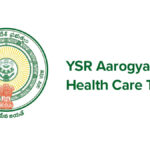In the heart of rural India, a powerful movement is transforming lives and communities. The Deendayal Antyodaya Yojana – National Rural Livelihoods Mission (DAY-NRLM) is helping millions of rural women lift themselves out of poverty through self-help groups, skill development, and sustainable livelihoods. This ambitious program aims to reach 10 crore women by 2024, bringing hope and economic empowerment to India’s countryside.
What is DAY-NRLM?
DAY-NRLM is a flagship program of the Indian government’s Ministry of Rural Development. It started in 2011 as a new version of an older scheme called Swarna Jayanti Gram Swarozgar Yojana (SGSY). The program’s main goal is to help poor rural families, especially women, earn more money and improve their lives.
Key Features
- Self-Help Groups (SHGs): The program organizes rural women into small groups called SHGs.
- Financial Support: It helps these groups get loans from banks to start small businesses.
- Skill Training: Women receive training to improve their skills and start new jobs.
- Community Support: The program builds strong local institutions to help poor families in the long term.
How DAY-NRLM Works
DAY-NRLM uses a step-by-step approach to help rural communities:
- Organizing Women: The program brings together poor rural women to form SHGs.
- Building Skills: It provides training to help women learn new skills for jobs or businesses.
- Access to Credit: The program helps SHGs get loans from banks at low interest rates.
- Creating Livelihoods: It supports women in starting small businesses or finding good jobs.
- Community Institutions: The program helps form larger groups of SHGs at village and higher levels.
Implementation Structure
- National Level: The Ministry of Rural Development oversees the program.
- State Level: Each state has a State Rural Livelihoods Mission to run the program.
- District and Block Level: Special teams work at district and block levels to implement the program.
Achievements and Impact
DAY-NRLM has made significant progress in reaching and empowering rural women:
- Wide Reach: As of June 2024, the program covers 7,135 blocks in 742 districts across 28 states and 6 union territories.
- Massive Mobilization: It has brought together 10.05 crore women into more than 90.86 lakh SHGs.
- Financial Inclusion: Since 2013-14, women’s SHGs have received a total of Rs. 8.15 lakh crores in loans from banks.
- Recent Progress: In the 2023-24 financial year alone, 39 lakh SHGs received loans totaling Rs. 1.12 lakh crore.
Key Components of DAY-NRLM
1. Social Mobilization and Institution Building
The program focuses on bringing rural women together and forming strong community groups:
- Self-Help Groups (SHGs): Small groups of 10-15 women who save money together and support each other.
- Village Organizations (VOs): Groups of SHGs at the village level.
- Cluster Level Federations (CLFs): Larger groups of VOs that work together.
These groups help women access resources, share knowledge, and gain confidence.
2. Financial Inclusion
DAY-NRLM works to improve access to banking services for rural women:
- Bank Linkages: Helps SHGs open bank accounts and get loans.
- Interest Subvention: Provides support to lower the interest rates on loans for SHGs.
- Digital Finance: Promotes the use of digital banking services in rural areas.
3. Livelihoods Promotion
The program supports both farm and non-farm livelihoods:
- Agriculture: Trains women farmers in better farming methods and helps them access markets.
- Micro-enterprises: Supports small businesses in areas like handicrafts and food processing.
- Skill Development: Provides training for various jobs and self-employment opportunities.
4. Convergence and Partnerships
DAY-NRLM works with other government programs and organizations:
- Government Schemes: Helps rural families access other helpful government programs.
- Private Sector: Partners with companies to create job opportunities.
- NGOs: Works with non-profit organizations to reach more rural communities.
Special Initiatives under DAY-NRLM
1. Start-up Village Entrepreneurship Program (SVEP)
SVEP helps rural entrepreneurs start and grow their own businesses:
- Provides training, funding, and support to village entrepreneurs.
- Focuses on creating local, sustainable businesses in rural areas.
2. Mahila Kisan Sashaktikaran Pariyojana (MKSP)
MKSP is a special program to empower women farmers:
- Promotes sustainable agriculture practices.
- Supports women in agriculture and related activities.
3. Aajeevika Gramin Express Yojana (AGEY)
AGEY helps rural youth start transportation services in their areas:
- Provides support to buy and operate vehicles for rural transport.
- Creates employment opportunities in remote rural areas.
Challenges and Future Directions
While DAY-NRLM has made significant progress, it still faces some challenges:
- Reaching the Poorest: Ensuring the program benefits the most vulnerable groups.
- Sustainability: Making sure SHGs and businesses continue to grow and succeed.
- Market Linkages: Helping rural producers connect with larger markets.
The program is constantly evolving to address these challenges:
- Technology Integration: Using digital tools to improve program implementation and monitoring.
- Skill Upgradation: Continuously updating training programs to match market needs.
- Strengthening Community Institutions: Building stronger and more self-reliant local organizations.
Conclusion
The Deendayal Antyodaya Yojana – National Rural Livelihoods Mission represents a significant effort to transform rural India. By empowering women, promoting financial inclusion, and supporting sustainable livelihoods, DAY-NRLM is helping millions of rural families improve their lives. As the program continues to grow and evolve, it holds the promise of creating a more prosperous and equitable rural India.





